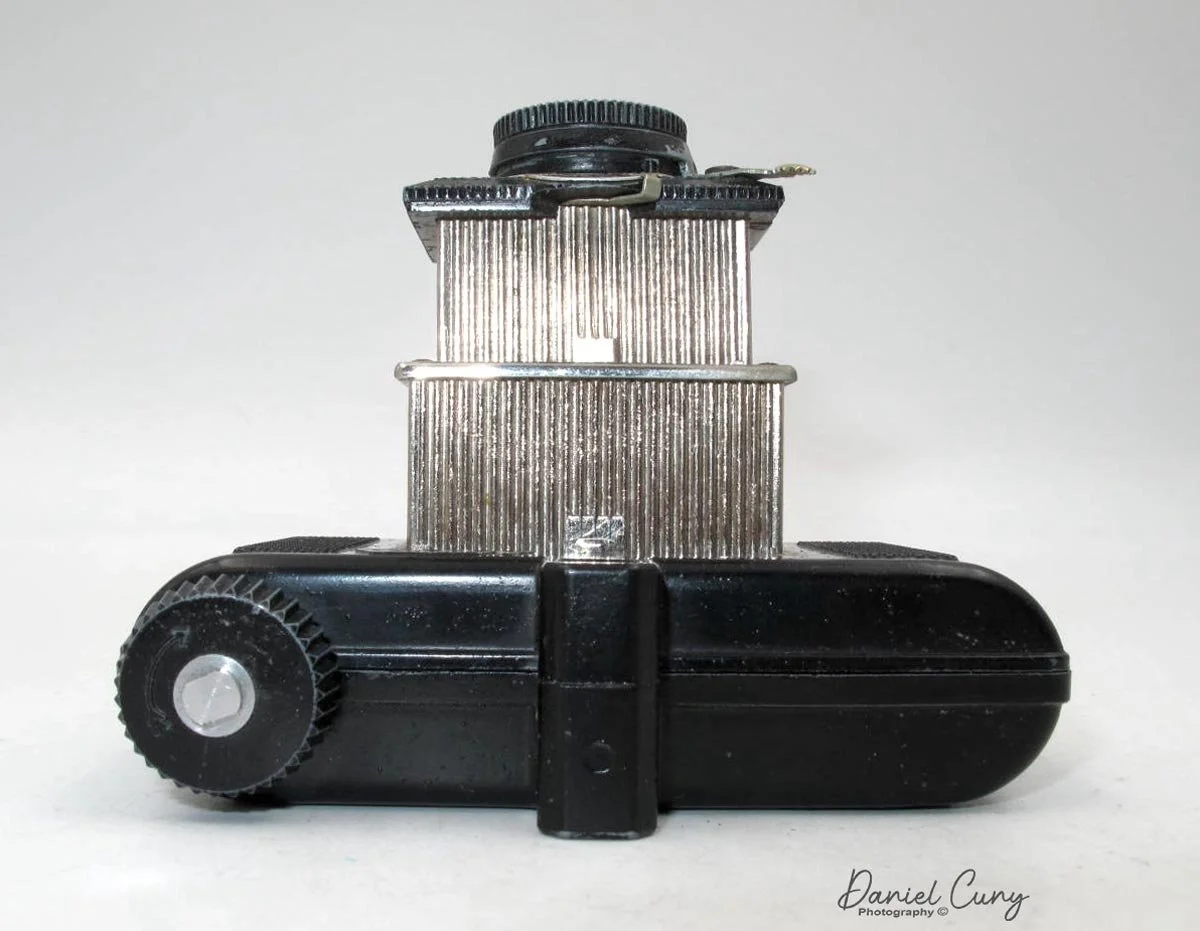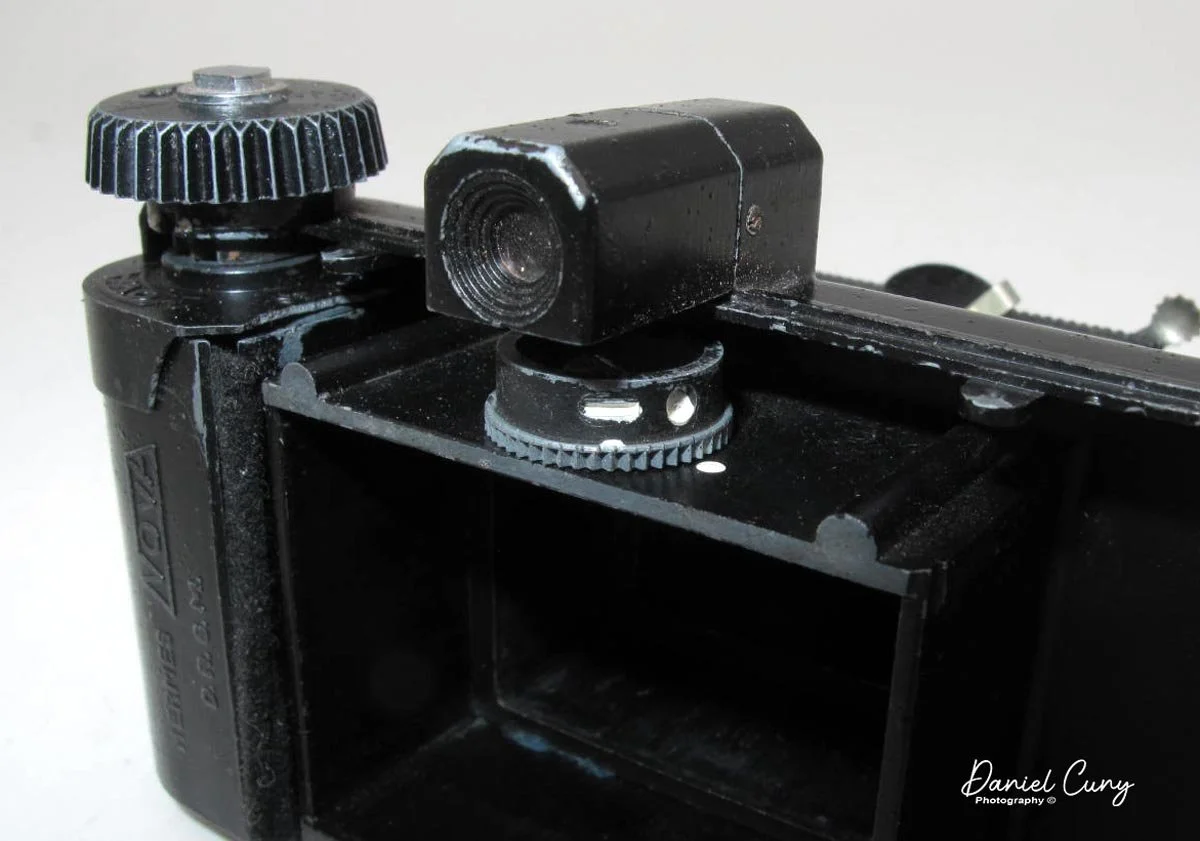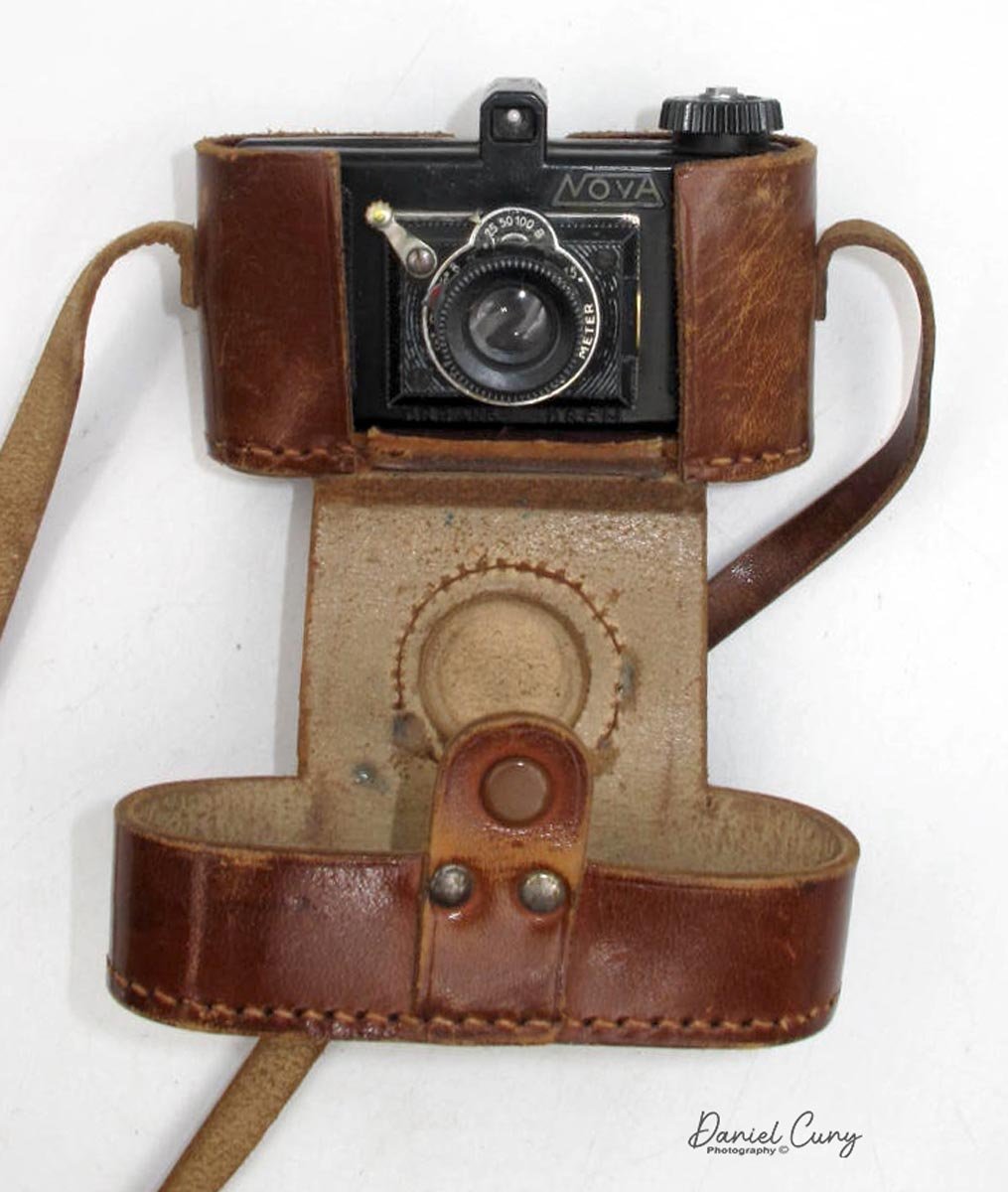This week's camera is the Inoca Six Stereo Camera. I'm perplexed by it and wanted to see if others have it or have any information besides the very sparse information I can find online. I'm particularly interested in learning more about its history and the context of its production. If you have any insights, I'd love to hear from you.
My Inoca Six Stereo Camera
Four to five years ago, I stumbled upon a unique find on an online app I frequent for camera and photo items. The Inoca Six Stereo Camera, a seemingly familiar yet rare gem, caught my eye. The seller's claim of its extreme rarity, with only three known to exist, further fueled my interest.
At that time, I did the average online search and couldn't find much on the camera or its manufacturer, Morita Trading Co., so I decided to take a chance on it. The camera wasn't cheap, but it wasn't overly expensive, so I couldn't take a chance on it, especially if it was so rare. There were only three cameras left.
The Company:
Morita Shōkai, or from what I can find online, was Morita Trading Company, a camera manufacturer and distributor in Japan during the 1950s. Their most prominent and most well-known cameras were subminiature cameras that had a resemblance to the Leica rangefinder cameras. I've seen many, like the Gem 16, Kiku 16, and Saica, which took 10-14x14mm images on miniature 17.5m film. They also made Bolta Film cameras like the Kikuflex camera in 1957 and the Inoca Stereo camera in 1956.
There is a Japanese book, Japanese Camera History, as seen in advertisements, 1935–1965. The book was written by the publishers of Asahi Camera, which was a Japanese Camera magazine from 1926 until June 2020, where some of the Morita cameras are advertised.
My assumption was that the camera/distributor was very short-lived with the subminiature market's rapid rise and quick fall. In that specific timeframe, from 1955 to 1957, when these cameras were made, Morita tried to expand into Bolta film cameras like the Kikuflex, which is more common than the Inoca Stereo camera I have.
My Camera:
According to the case, I own an Inoca Six Stereo Camera. The camera is a straightforward bakelite stereo camera. All I see online is the Inoca Stereo camera. None of the cameras I see online have or show the fitted leather case; honestly, I have only seen three examples of this camera. One is on Camera-Wiki, and this is the camera I own. The eBay seller isn’t available on eBay so that I couldn’t contact them for more information. The second example I've seen is a camera sold at auction by Auction-team.de, and Leitz Photographica Auction sold the third example of the camera. The camera sold for quite a bit on the Leitz site many years ago.






My camera measures 4.5" wide by 3" tall by 2.25" deep and weighs 7.6 oz without the case, but the roll of film was in the camera. My camera has two chrome lens caps attached to the lenses. Looking on top of the camera, the winding knob is on the far left, and on my camera, the winding knob has three rings around the top of the knob. Looking at the camera from the Auction Team website, the winding knob is flat and looks to have leatherette or paint on top. Right next to the winding knob is where "Morita" should be printed, but someone took a hot implement and erased "Morita," but below where it's erased, & Company can be seen. On the other side is "patent" written.
On either side of the "Inoca" script, on top of the viewfinder, are two small sockets, which I'm guessing were for a flash, but that's just my guess. The shutter release is next to one of the small sockets, and the film holder is on the far right side of the camera. On the film holder is a knurled ring with an indent in the center with black paint.
Upon inspecting the back of the camera, I discovered a film counting window with a side cover and a green window to view the frame numbers. To my surprise, a roll of film was still in the camera, held closed by white replacement tape. With 'MINORI' printed on the ends, the film spool added to the intrigue.
On the front of the camera is the word "STEREO" italicized and just under the front viewfinder glass. To the right of the word "stereo" is the shutter cocking lever. When the camera has already shot, and the shutter is not cocked, you see a red arrow pointing towards the left, and the cocking knob is to the far right position. Sliding the knob to the left, you've cocked the shutter(s) for both lenses, and the word "set" written in red is visible. Pressing the shutter release resets the knob to the right side position, and the arrow is visible again. On the outside of either lens is a screw which I've seen a chain with a lens cap attached to it, but unsure if that's really what they are for. My guess is to remove the front with the lenses, shutter, and aperture.
Below the left lens is where you set the shutter speeds. The camera can only shoot at 1/25, 1/50, and 1/100 sec, along with "B" for exposure times. Below the right lens are the aperture settings with your choice of F8 or F11. Both the shutter speeds and aperture setting are controlled by a simple knob similar to the knob used to cock the shutter.
Lastly, the bottom of the camera is printed "Made in Japan," along with a tripod mount for timed exposures if needed. There is no cable release capability if you want to do a time exposure. Another interesting item on the camera is a triangle pointing upwards between the two lenses with the letters M.W.T, and along the bottom line is a curved line, which generally represents a lens symbol. I'm wondering what M.W.T means, Morita, something?
My camera also has a leather-fitted case, which is pretty tattered but still comes with the camera. You can see Inoca Six embossed on the front, so that's my guess at the official name, but I've only seen the Inoca Stereo camera.
Conclusion:
I realize this is a short post, but I could have developed the film found in the camera. Unfortunately, I didn't have a film ready to fit the size of the film, so I left it until I got something I could do. The camera is fundamental, and I like its design. It reminds me of the Start 35 K-II camera, another Bolta film camera made in Japan during the same timeframe.
Thank you for taking the time to look over this post. If you have more information on this camera, please let me know. Otherwise, I think I have one of three cameras I know of and have seen online.
Until next week, please be safe and well.


















































